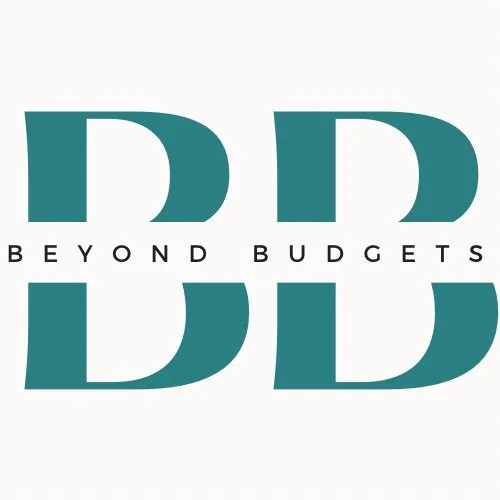What is Overspending, Really?
Picture it. You’ve looked at your actual spending like I do every month, and you don’t like what you’re seeing. Surprise car repairs, subscriptions you forgot about, this month’s credit card bill was how much? How???
If you think you might be overspending, that’s an excellent discovery — one that can help you get your finances on track to achieve your goals. But let’s hover for a minute on the overspending of it all… what does that really mean?
Many people look at overspending as spending more than they realize. But if this were the case, most of us would be overspending. Truly. Purchases add up faster than it can feel. I talk to people all the time who scratch their heads wondering “where did it all go?”
Additionally overspending can also be the default term for spending more than your budget. Yes, but only IF your budget is realistic. Remember that time I created a stupidly unrealistic family budget? I wasn’t overspending… I was under-budgeting. It’s important to make the distinction.
Doing the work of measuring your spending over several months will help determine a realistic number. Once a realistic figure is budgeted, then you can accurately evaluate if you’re overspending.
Back to the point. Overspending is two things, and two things only. Number 1. It’s spending on crap that doesn’t add value to your life. And number 2. It’s spending on stuff you can’t afford.
The great news about #1 — you can cut that nonsense. You can (and should) cut spending on stuff you don’t need, love, or care about. From the small to the large, you can cut. For example if you’re tossing out full bags of spinach every week because they rot in the fridge, don’t buy spinach anymore. If you’re drowning paying off a boat you rarely use (pun absolutely intended), cut your losses and sell the boat. And there could be dozens of other costly items in between.
#2 comes with a bit more work though. To know what you can afford, you’ve got to know what you can afford. You have to have a realistic budget (with some buffer built in), run the numbers (including hidden costs of ownership), and know where the trade offs will be.
Let’s cover an example. We bought our son a brand new saxophone a few months ago. But first, we had to evaluate two things — 1) Would it bring value to his life? And 2) Can we afford it?
For value, the answer was an easy yes. He needed it for his 9th grade band year because his beginner sax was being passed to his 6th grade brother. He loves playing, gets tremendous joy from it, and shows the interest and talent to move to a more advanced instrument. He wants to continue playing through high school and college, and this was a horn that could set him up for the next several years.
That left the question of affordability. By design our budget includes some room for buffer and savings, so we ran the numbers and options. $3,600 is no small amount, but we did have savings in an HYSA to cover it. Ultimately we plugged a monthly payment of $350 — notice an extra $50 per month for repairs and incidentals — into our realistic budget and saw that we could temporarily offset the extra cost with some small attainable cuts to our dining out, subscriptions, household items, and kids’ expenses. A 12-month pivot that allowed us to hang on to cash in savings was worth it to us.
Finally, we had to factor in risk. What if our son decides to quit playing after this year? Well, fortunately, his younger brother plays the same instrument, so that offers us some reassurance. In a worst-case scenario where no one in our household needs or wants a saxophone, we could sell it used.
In the end, managing overspending isn’t about restricting yourself from making big purchases — it’s about being intentional and thoughtful with your money. When you focus on buying things that add value to your life and ensure those purchases fit within a realistic budget, you’ll remain in control of your finances. The key is aligning your spending with your values and financial goals, rather than just reacting to every expense that comes your way. By doing that, you’ll be on a path to financial stability and success, and the overspending stress will take a back seat. So start cutting the unnecessary and plan for what truly matters. Your future self will thank you!


